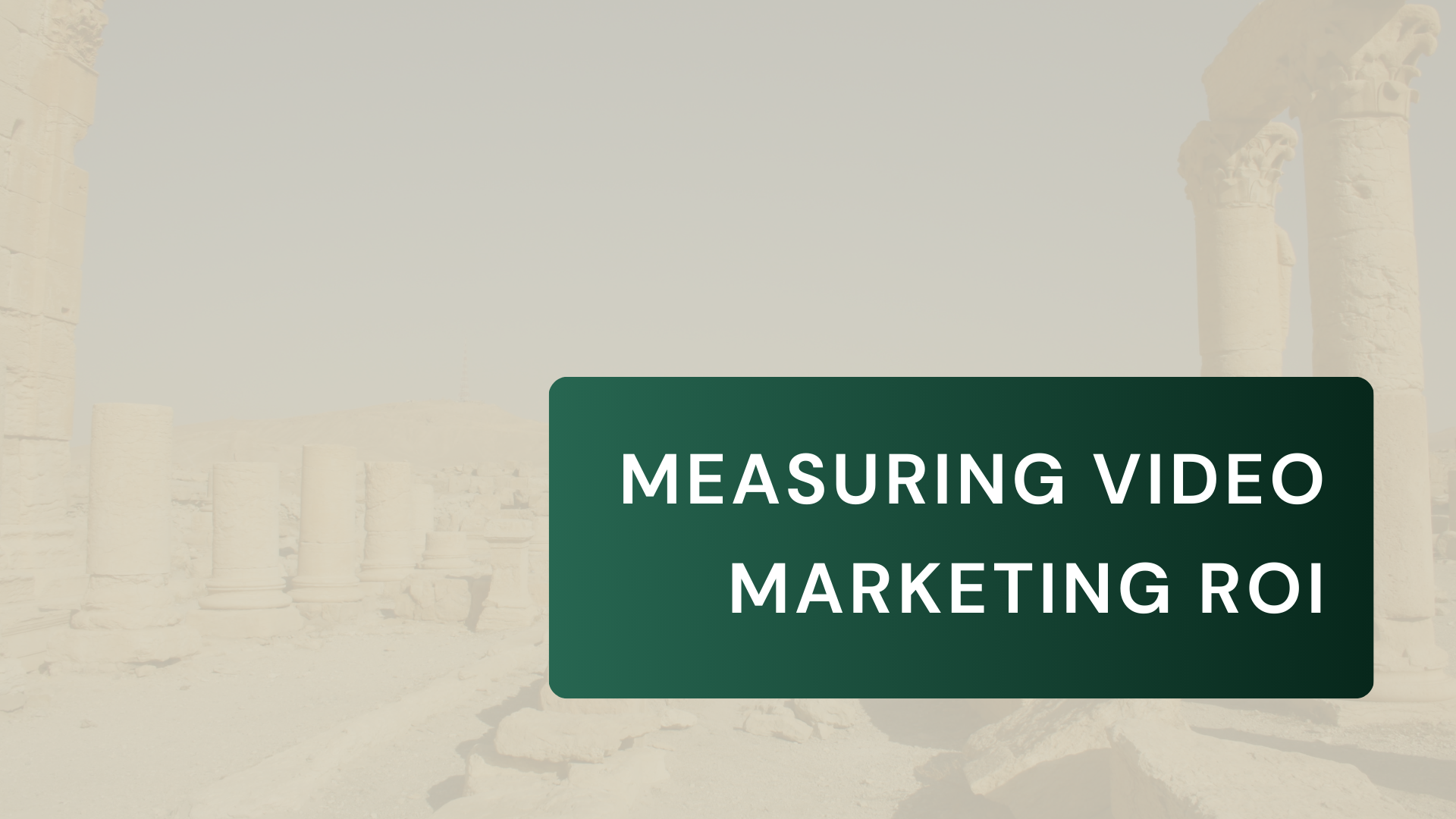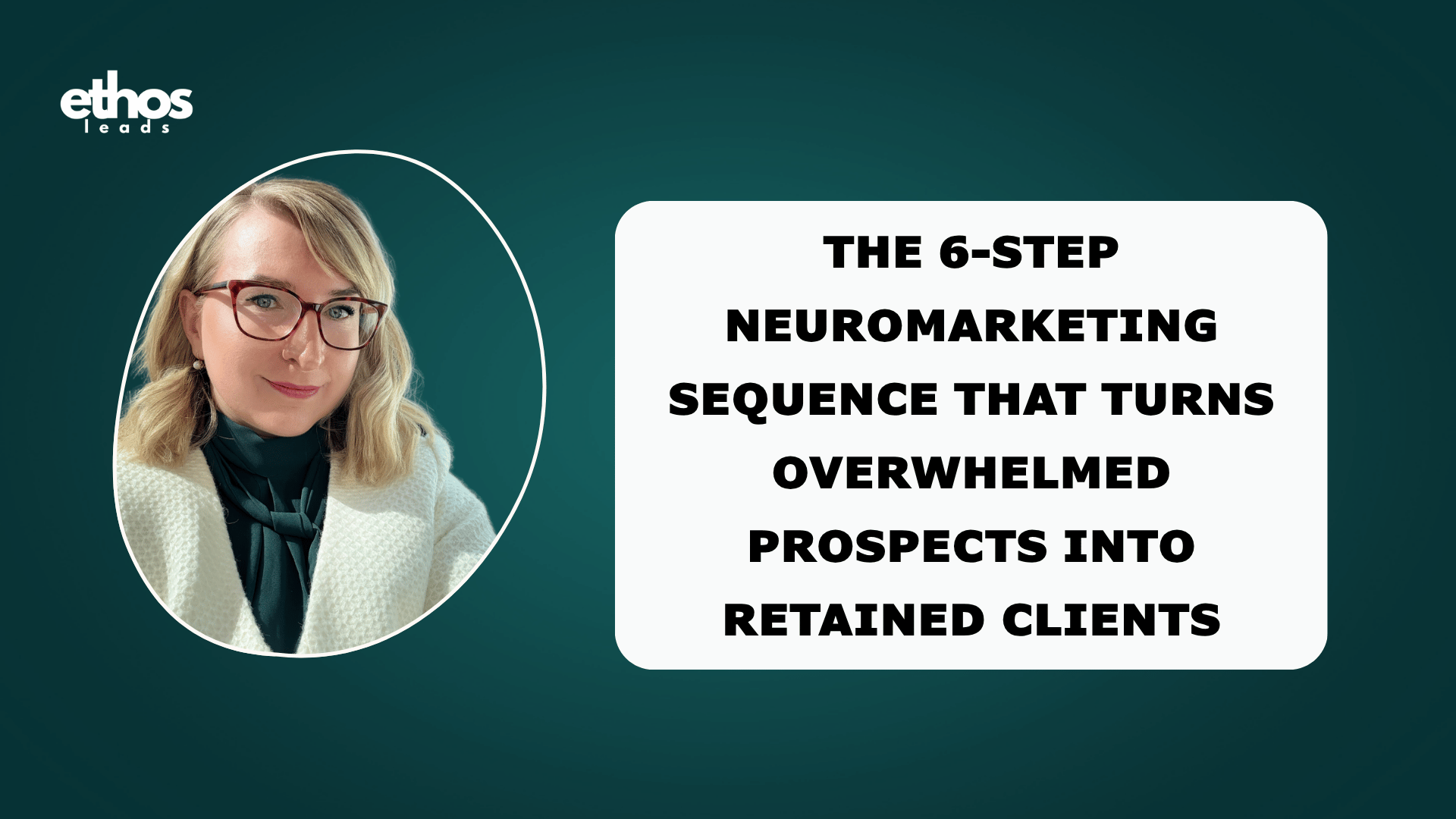Measuring Video Marketing ROI
- Video
- 8 mins
Calculating Return on Investment (ROI)
Ultimately, the success of your video marketing efforts should be measured by the return on investment (ROI). To calculate ROI, you'll need to track the costs associated with producing and promoting your videos, as well as the revenue generated from leads and conversions.
Calculating ROI metrics allows you to assess the profitability and effectiveness of your video marketing investments:
- Cost per Lead: The average cost of acquiring a lead through your video marketing efforts.
- Client Acquisition Cost: The total cost of video production and promotion divided by the number of new clients acquired.
- Revenue from Video Leads: The revenue generated from leads and clients acquired through video marketing.
Cost per Lead (CPL)
To calculate the Cost Per Lead (CPL) for your video marketing efforts, use the following formula:
CPL = Total Video Marketing Cost / Number of Leads Generated from Videos
Total Video Marketing Cost: This includes all the expenses associated with creating and promoting your videos. Here are some potential cost factors to consider:
- Production Costs: Scriptwriting, filming, editing, animation (if applicable), talent fees, music licensing, etc.- Promotion Costs: Paid advertising on video platforms or social media, promotion through influencer marketing, etc.
- Content Marketing Costs: Costs associated with creating blog posts, landing pages, or other content to support your video marketing efforts. Number of Leads Generated from Videos: This is the total number of potential clients you acquire through your video marketing initiatives. You can track this through website analytics by identifying how many leads came from your video landing pages or forms embedded within the videos themselves.
Example:
Let's say your law firm spent a total of $5,000 on video production and promotion for a specific video campaign. Additionally, you spent $1,000 on content marketing to create a blog post and landing page promoting the video.
As a result of the video campaign, you captured 20 new leads through your website.
Total Video Marketing Cost = $5,000 (production & promotion) + $1,000 (content marketing) = $6,000
Number of Leads Generated from Videos = 20
Cost per Lead (CPL) = $6,000 / 20 leads = $300 per lead
CPL can vary depending on the complexity of your video productions, your target audience, and the competitiveness of your legal field.
To get the most accurate CPL:
- Calculate it for specific periods (e.g., monthly, quarterly)
- Track leads across all conversion points (form submissions, phone calls, etc.)
- Use tools like Google Analytics or CRM software to ensure accurate lead attribution
- Consider calculating CPL for individual video campaigns to compare their effectiveness
By regularly calculating and monitoring your CPL, you can assess the efficiency of your video marketing efforts and make data-driven decisions to optimize your strategies and budget allocation.
Client Acquisition Cost (CAC)
Determine the total cost of acquiring a new client through video marketing:
CAC = Total Video Marketing Cost / Number of New Clients Acquired from Videos
Total Video Marketing Cost: This includes all the expenses associated with creating and promoting your videos, similar to what we discussed for CPL. Consider production costs (scriptwriting, filming, editing), promotion costs (advertising, influencer marketing), and any content marketing expenses that support the video campaign. Number of New Clients Acquired from Videos: This is the number of clients who convert from leads generated through your video marketing efforts. Tracking this metric might require some additional legwork compared to leads.
You can use a combination of methods like:
CRM Tracking: If your law firm uses a Customer Relationship Management (CRM) system, you can track which clients originated from video marketing campaigns.
Client Surveys: During the onboarding process, you can ask new clients how they discovered your firm and see if videos played a role.
Example:
Building on the previous CPL example, let's say that 5 out of the 20 leads generated from your video campaign converted into paying clients for your law firm.
Total Video Marketing Cost = $6,000 (from CPL example)
Number of New Clients Acquired from Videos = 5
Client Acquisition Cost (CAC) = $6,000 / 5 clients = $1,200 per client
Important Considerations:
- CAC is a crucial metric for understanding the overall profitability of your video marketing efforts. It allows you to see how much it costs to acquire a new client through video marketing compared to other channels.
- Tracking CAC can be more challenging than CPL because it requires verification that a lead became a paying client. However, it provides a more complete picture of your video marketing ROI.
By analyzing both CPL and CAC, you can gain valuable insights into the efficiency of your video marketing funnel. You can identify areas for improvement, such as optimizing your video content to convert more leads into clients or refining your lead nurturing process.
Revenue from Video Leads
Revenue from Video Leads goes beyond simply multiplying the number of leads by your average client fee. It analyzes the actual revenue generated from those leads converted into paying clients through your video marketing efforts.
Calculation Method
There isn't a one-size-fits-all formula for this metric, as law firms often have different fee structures (hourly billing, retainers, project-based fees). Here are two common approaches to consider:
1. Average Client Value (ACV) Approach
This method works well if your firm has a predictable average client value.
Formula:
Revenue from Video Leads = Number of New Clients Acquired from Videos * Average Client Value (ACV)
- Number of New Clients Acquired from Videos: As discussed earlier, this is the number of clients who converted from leads generated through your video marketing efforts (tracked through CRM or client surveys).
- Average Client Value (ACV): This represents the average revenue generated from a client over a specific period (e.g., lifetime value, annual value). You can calculate your ACV by dividing your total annual revenue by the number of clients you served in that year.
2. Project-Specific Revenue Tracking
This method is ideal if your firm has a wider range of services with varying fees. Process:
- Identify the specific legal services promoted in your video content.
- Track the revenue generated from new clients who came through video leads and used those specific services.
Example (ACV Approach):
Let's revisit the scenario where your video campaign resulted in 5 new clients for your firm, which typically has an Average Client Value (ACV) of $10,000.
- Number of New Clients Acquired from Videos = 5
- Average Client Value (ACV) = $10,000
Revenue from Video Leads = 5 clients * $10,000/client = $50,000
Example (Project-Specific Tracking):
Imagine your video campaign focused on personal injury cases, and 3 out of the 5 new clients acquired from videos used your personal injury services, generating a total of $25,000 in revenue.
Revenue from Video Leads (Personal Injury) = $25,000
Combining Revenue Metrics with Other Data
By calculating Revenue from Video Leads alongside other metrics like CPL and CAC, you can gain a comprehensive picture of your video marketing ROI.
For instance, you can see:
- How much revenue each video-generated client brings in compared to the cost of acquiring them (CAC).
- The effectiveness of your video content in converting leads into high-value clients.
Remember, these are just starting points. You can refine your calculations based on your specific law firm's structure and fee arrangements.
Key Takeaways
By tracking these KPIs, law firms can gain valuable insights into the performance of their video content, audience engagement, lead generation effectiveness, and ultimately, the return on investment from their video marketing strategies.
Embrace a data-driven approach, continuously refine your video marketing strategy and create content that truly connects with your target audience, driving growth for your law firm.
Interested to learn more about the power of video marketing for lawyers?
Read Lawyer Video Power: The Step-By-Step Guide to Build Your Law Firm's Video Marketing Strategy
This guide will equip you with the knowledge and tools to navigate the exciting world of video marketing for lawyers. From crafting a strategic plan to creating captivating content and measuring success, you have everything you need to use the power of video and grow your legal practice.





